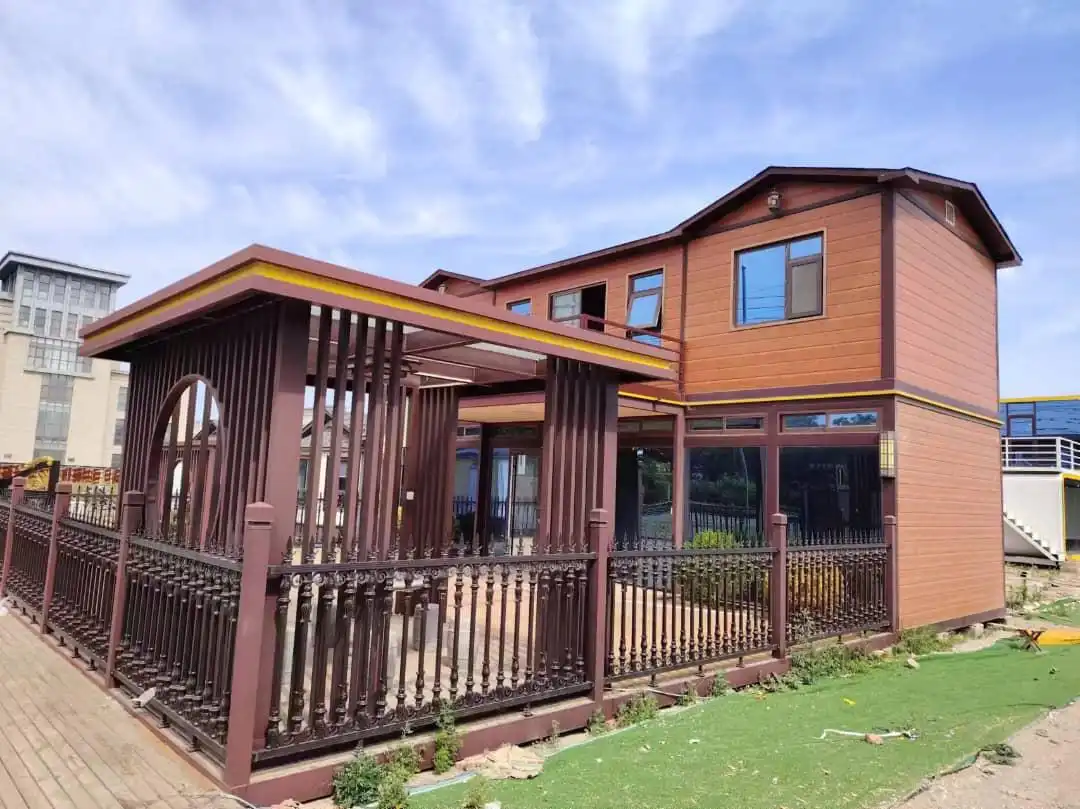The Evolution of Exterior Wall Cladding
Sinceitsorigin,theideaofoutsidewallcladdinghasadvancedsignificantly. Traditional materials like brick and stone have given way to more innovative solutions that offer superior performance and design flexibility. Exterior decorative wall panels represent the pinnacle of this evolution, combining cutting-edge technology with aesthetic sensibility.
Modern exterior panels are designed through careful engineering to satisfy the requirements of contemporary architecture and also tackle environmental issues. Usually, they are crafted from durable materials like aluminum and steel, which are renowned for their sturdiness and long-lasting nature. Subsequently, these materials undergo treatment with sophisticated coatings. These coatings offer protection against UV radiation, corrosion, and other environmental elements.
Advancements in Panel Technology
Multilayeredsystemswithimprovedperformancehavebeendevelopedasaresultofrecentdevelopmentsinpaneltechnology. These systems often include:
- A core layer made of insulating materials like polyurethane (PU), expanded polystyrene (EPS), or rock wool
- A protective outer layer that can be customized with various finishes and textures
- An inner layer designed for additional insulation and moisture resistance
This multi-layered approach ensures that exterior decorative wall panels not only look great but also contribute significantly to the building's overall energy efficiency and durability.Customization: The Key to Unique Exterior Designs
One of the most compelling aspects of exterior decorative wall panels is the vast array of customization options they offer a wide range of colors, textures, and patterns are available for architects and designers to use when creating genuinely distinctive facades that capture the essence of the structure and its surroundings.
Color and Finish Options
The color possibilities for exterior panels are virtually limitless. From subtle earth tones to vibrant hues, there's a shade to suit every design vision. Moreover, various finishes can be applied to create different visual effects:
- Matte finishes for a sophisticated, understated look
- Glossy finishes to add a touch of glamour and reflect light
- Metallic finishes for a modern, industrial aesthetic
- Wood grain finishes that mimic the warmth of natural timber
These finish options allow designers to achieve the desired look without compromising on the performance benefits of metal panels.Texture and Pattern Variations
Beyond color and finish, exterior decorative wall panels can be embossed or perforated to create intricate patterns and textures. This adds depth and visual interest to the facade, creating a dynamic interplay of light and shadow. Some popular texture options include:
- Wave patterns for a fluid, organic look
- Geometric designs for a bold, contemporary statement
- Naturalistic textures that evoke stone or wood
- Custom patterns that incorporate logos or specific design elements
The ability to mix and match these various customization options allows for truly bespoke exterior designs that can set any building apart.Performance Benefits of Exterior Decorative Wall Panels
Theperformanceadvantagesofexternalornamentalwallpanelsarejustasremarkableastheirvisualappeal.Thesepanelsprovideanumberofbenefitsthatenhanceabuilding'soverallqualityandefficiencyandaredesignedtosatisfytheexactingspecificationsofcontemporaryconstruction.
Energy Efficiency and Insulation
Thefactthatoutdoorornamentalwallpanelscontributetoenergyefficiencyisamongitsmostimportantadvantages. The insulating properties of these panels help maintain stable indoor temperatures, reducing the load on heating and cooling systems. This translates to lower energy consumption and reduced utility costs for building owners.
The insulation performance of these panels is often measured by their R-value, which indicates thermal resistance. High-quality exterior panels can offer R-values that meet or exceed building code requirements, ensuring optimal thermal performance year-round.
Weather Resistance and Durability
Exterior decorative wall panels are designed to withstand the rigors of outdoor exposure. They are highly resistant to:
- UV radiation, which can cause fading and degradation of materials
- Moisture, preventing water infiltration and potential damage to the building structure
- Temperature fluctuations, maintaining their integrity in both hot and cold climates
- Wind loads, with many panels rated for high-wind areas
This exceptional durability ensures that the panels maintain their appearance and performance over time, reducing maintenance costs and extending the lifespan of the building envelope.
Fire Safety Features
Fire safety is a critical concern in building design, and exterior decorative wall panels address this issue head-on. Many panels are manufactured with flame-retardant properties and meet stringent international fire-resistance standards. This includes:
- Non-combustible core materials
- Fire-resistant coatings
- Designs that inhibit the spread of flames
These features provide an additional layer of protection for building occupants and can be crucial in containing potential fire outbreaks.Acoustic Performance
In urban environments or industrial settings, noise pollution can be a significant concern. Exterior decorative wall panels can contribute to improved acoustic performance by absorbing and deflecting sound waves. This can create a more comfortable indoor environment and help buildings meet local noise regulations.
The acoustic benefits of these panels are particularly valuable in:
- Residential complexes near busy roads or airports
- Office buildings in high-traffic areas
- Industrial facilities where noise reduction is essential
By addressing both visual and auditory aspects of design, exterior decorative wall panels offer a comprehensive solution for modern building envelopes.Conclusion
Exterior decorative wall panels represent a pinnacle in building envelope technology, offering an unparalleled combination of aesthetics, durability, and performance. Their ability to enhance the visual appeal of a structure while simultaneously improving its energy efficiency, weather resistance, and safety makes them an invaluable asset in modern architecture.
With the ongoing increase in the demand for sustainable and high-performing buildings, the significance of exterior decorative wall panels is expected to rise. Their flexibility and adaptability render them appropriate for numerous applications, spanning from modern urban offices to charming rural homes.
For architects, designers, and building owners aiming to enhance their projects with state-of-the-art exterior solutions, it is essential to explore the potential of decorative wall panels. Selecting the appropriate panel system can take a building from being ordinary to truly remarkable. This not only makes a strong, long-lasting impression but also provides practical advantages in terms of energy efficiency and structural durability.
To learn more about how exterior decorative wall panels can enhance your project, or to explore the range of options available, don't hesitate to reach out to the experts. Contact us at info@sdqsc.com for personalized advice and solutions tailored to your specific needs.